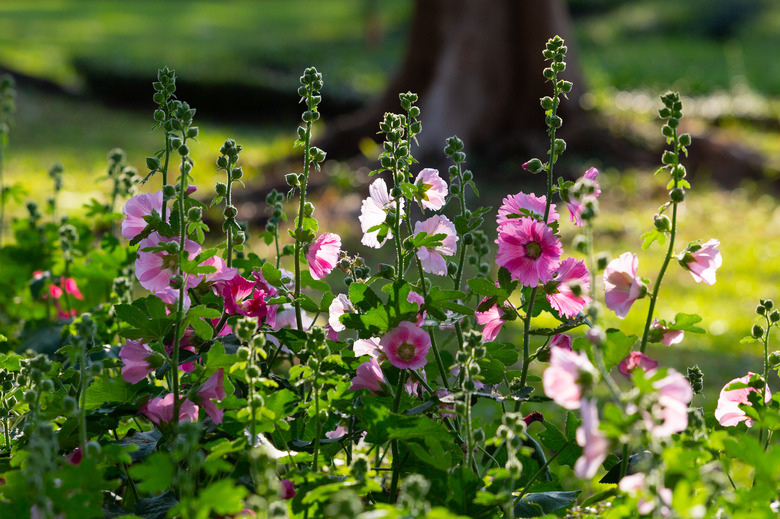Is A Hollyhock An Annual Or A Perennial?
We may receive a commission on purchases made from links.
Hollyhocks (Alcea rosea) tower majestically at the back of a flowerbed on stalks that are often taller than the gardener. They bear flowers in a wide variety of shades from white to purple to yellow, and are often seen in cottage gardens. While they are sometimes listed as both annuals and perennials, hollyhocks' life cycle is a bit more complex than those categories indicate.
Hollyhocks Are Not Annuals
Hollyhocks Are Not Annuals
Annual plants go from seed to seed in a single season, dying off at the end of summer. You can plant a seed indoors in pots in late winter or outdoors in early spring and expect to get flowers in the summer. An annual's flowers will then go to seed before fall, if you don't deadhead.
Annuals tend to flower all season long because they only have one year to ensure that their progeny take hold. In Southern climates, most annuals cannot tolerate the heat of summer and are grown as winter annuals instead. Hollyhocks, which only bloom for one summer, are sometimes erroneously considered annuals.
Hollyhocks Are Not Perennials
Hollyhocks Are Not Perennials
Perennial plants live many years, surviving a winter dormancy period in colder areas and awakening in spring. Herbaceous perennials, such as purple coneflower, die back to their roots when cold weather sets in and then sprout from the roots in spring. Woody perennials, like roses, lose their leaves and flowers but don't die back to the ground.
Perennials often do not bloom for the first year or more, instead building up strength to survive the winters before spending energy reproducing. Some woody perennials, such as oak trees, don't bloom for several decades. Because hollyhocks live more than one year, some erroneously categorize them as perennials.
Hollyhocks Are Biennials
Hollyhocks Are Biennials
Hollyhocks are biennials. Biennial plants are an intermediary form of plant that falls between annuals and perennials. They have a two-year life cycle.
Biennials spend the first year of their lives building their roots and storing energy. Usually biennials grow in a flat circular rosette held near the ground for the first year. After going dormant for the winter, biennials then reemerge, grow a taller flowering structure, set seed, and then die.
Biennials often flower for longer periods than perennials and manage to set more seeds than annuals because of the energy they accrue over a longer lifetime. Hollyhocks are correctly placed in this category, as they are biennials.
Circumstances Causing Confusion
Circumstances Causing Confusion
When a gardener purchases hollyhocks from a greenhouse, they have already gone through a dormant period. That means that they will bloom immediately in the garden, then die. This can lead a novice to consider the hollyhock an annual.
On the other hand, hollyhocks are such proficient seeders that they will establish long-lived colonies, looking very much like perennials. In this case, it is likely to see some plants in flower and others that are just a rosette of leaves.
